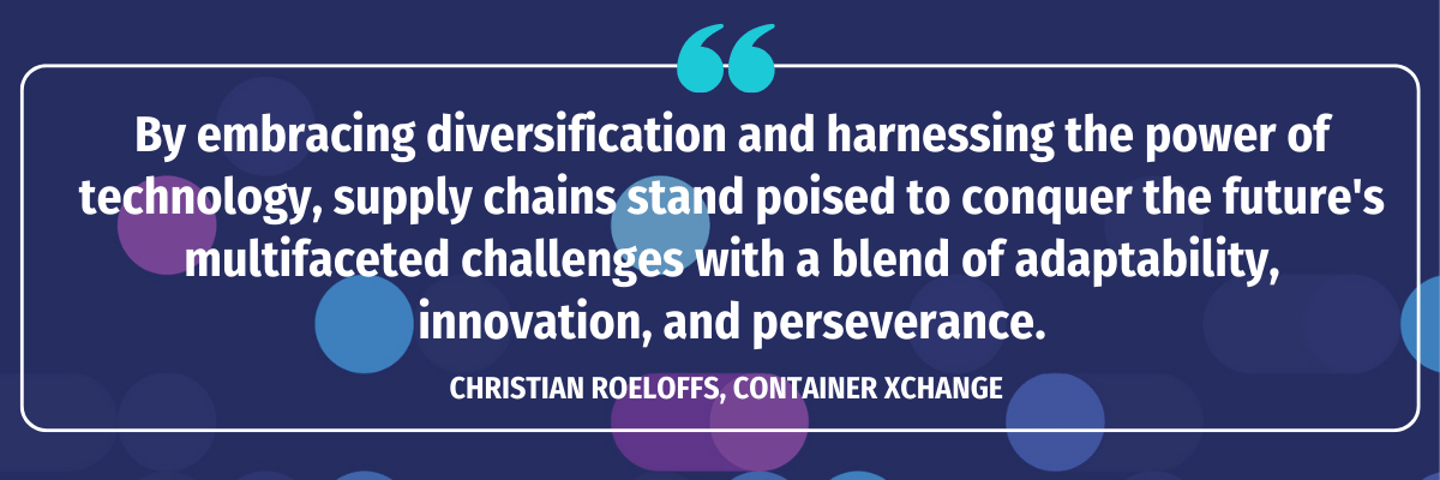What Is the Biggest Supply Chain Issue Today?
In exploring today’s top supply chain technology trends, it’s useful to dig into some of the most significant hurdles consumer goods companies are trying to overcome.
Why are there so many supply chain issues right now?
The current trends in supply chain management include a host of obstacles. “Marketplace disruption is always an external challenge, but not always something leaders can control. Functional silos are a nagging internal challenge … and fixing these is something leaders can control,” says Cleo CEO Mahesh Rajasekharan.
What’s causing supply chain issues today is impeded execution thanks to a lack of visibility across multiple functions, including procurement, planning, fulfillment, transportation management, and warehouse management, among others. “Enterprises need more end-to-end business process control and visibility,” he says.
What are the 4 things that can disrupt the supply chain?
There’s no shortage of potential disruptions to global supply chains, but the experts we spoke with homed in on material shortages, geopolitical issues, natural weather events, and digital adoption.
“While the cost of raw materials and production of parts may be a benefit to sourcing from faraway regions, it also presents a challenge,” says Ara Surenian, VP product management at Plex by Rockwell Automation. “Escalating tensions could trigger a conflict that destabilizes the flow of raw materials and supplies from the region. Compared to manufacturers that can on-/re-shore their supply chain sources, manufacturers that need to manage global supply chains will need to be more agile to adapt to ongoing unpredictable supply chain disruptions."
What's more, he notes, businesses must also adapt to evolving regulatory challenges to ensure they’re meeting standards.
Natural weather occurrences can also have serious impacts on global supply chains, ranging from delays to ruined raw goods, he adds. “Predicting weather events isn’t impossible, but the increasing severity and frequency of weather events make it much more difficult to plan for.”
For this part, Christian Roeloffs, the CEO of Container xChange, an online container logistics operating platform, identifies consumer understanding and digital adoption as the two key areas that present both challenges and opportunities for businesses.
Consumer Understanding: Internally, consumer packaged goods companies face the challenge of keeping their employees updated with the latest technologies and job requirements. This involves creating a learning culture and offering training for personal and professional growth. Externally, understanding the changing behavior of consumers, who are increasingly influenced by technology, is essential. The CPG industry must analyze data to adapt their products, services, and marketing strategies to meet these evolving needs.
Digital Adoption: The fast pace of technological advancement makes digital transformation vital for competitiveness. This is particularly challenging for consumer packaged goods companies with older, legacy systems. Technology can significantly improve supply chain operations by enhancing visibility, efficiency, and responsiveness.
“Through real-time tracking, data analytics, and automation, CPG companies can optimize inventory management, reduce lead times, and enhance demand forecasting, leading to streamlined operations and better customer satisfaction,” he notes.
What is the top supply chain issue for the future?
Roeloffs emphasizes the increasing importance of diversification for CPG industry supply chains. Companies should strategically diversify their sourcing, production, and distribution networks to enhance resilience and mitigate risks. This approach gains prominence in light of recent global disruptions and is crucial for ensuring business continuity amid uncertainties.
As a result, the adoption of technology in supply chains is no longer optional but a necessity. “The post-pandemic era has witnessed technology's role evolving from an option to a turbocharged driver, propelling companies to integrate digital solutions for survival and competitive advantage,” he says.
Given the constantly shifting nature of supply chain operations, continuous innovation and strategic recalibration are critical to alleviating supply chain challenges.
“The issues that supply chains grapple with are not stagnant; they evolve, and so do the strategies employed to conquer them. By embracing diversification and harnessing the power of technology, supply chains stand poised to conquer the future's multifaceted challenges with a blend of adaptability, innovation, and perseverance.”
Perhaps most succinctly, Roeloffs notes: “It’s never a boring day for supply chains at any given day or time.”



